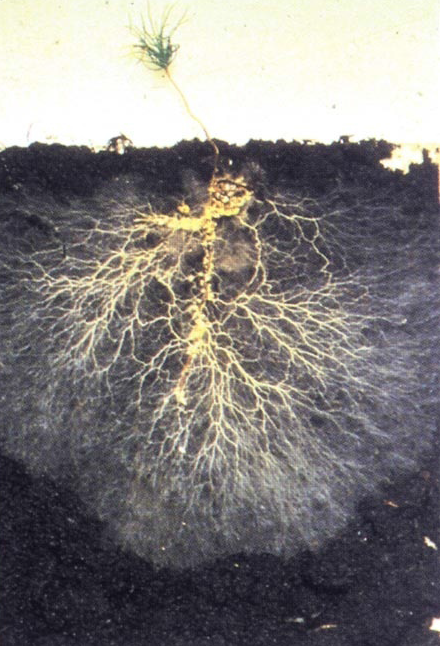Application of ammonia based fertilisers can adversely affect soil health by depleting humus and soil organic matter, and creating unfavourable conditions for microbes to grow and function. However, the effect is dependent on the form and amount of fertiliser applied, the soil’s buffering capacity, and soil management practices such as liming.
In terms of effects on soil health and microbial activity, improvements are still possible when organic matter and bio- stimulants are applied alongside a mineral fertiliser program to meet the nutrient requirements of the crops, but also feed the engine room of the soil. It is important for every farmer to consider the crops need, alongside the effect on your soil when developing a fertiliser program.
Using Microbes to Enhance Fertility
 An active soil ecosystem with beneficial soil microorganisms can have a very positive impact on fertiliser effectiveness. Microbes can solubilise compounds both organic and inorganic that are largely unavailable to plants, and make them available for uptake by the plants root system, allowing the plant to put more energy into growth. In performing this important function, the Microbes create a more efficient use of added nutrients, generating a better growth response from fertiliser inputs. Mycorrhizae can dramatically affect how much P fertiliser is required. With a healthy mycorrhizae presence in the soil, more P will be provided to the plants, requiring less to be added.
An active soil ecosystem with beneficial soil microorganisms can have a very positive impact on fertiliser effectiveness. Microbes can solubilise compounds both organic and inorganic that are largely unavailable to plants, and make them available for uptake by the plants root system, allowing the plant to put more energy into growth. In performing this important function, the Microbes create a more efficient use of added nutrients, generating a better growth response from fertiliser inputs. Mycorrhizae can dramatically affect how much P fertiliser is required. With a healthy mycorrhizae presence in the soil, more P will be provided to the plants, requiring less to be added.
Trial Data
We have long advocated the use of EM alongside fertilisers. The fertilisers and amendments applied provides a food source, and EMs researched ability to breakdown nutrients and stimulate resident microbes such as N fixing bacteria and Mycorrhizae, help to maximise yield potential in crops. Both trials below, show data demonstrating the positive effect of EM on the chemical fertility of the soil.
In the first trial (peer reviewed International Journal), the long-term soil amendments caused significant changes in soil physical-chemical properties. Soil organic matter, total N and available K content was significantly (p < 0.05) higher in the EM and compost plots than in the control plot. Soil available P and K content was significantly (p < 0.05) higher in the EM plot than in the traditional compost plot (Table 2).

Another trial conducted in Korea, looked at the effect of EM on the content of nutrients in the soil. The EM treatment increased the content of soluble nutrients, the contents of soluble nitrogen, phosphorous and potassium increased 4.4, 3.6 and 2.8 mg/100g soil, respectively. pH of the soil treated with EM was 0.1 higher than the control (Table 4).
The increase of soluble N, P and K contents might be attributed to in part, activity of nitrogen fixers, and organic acids excreted by the different organisms in EM.

Source link














